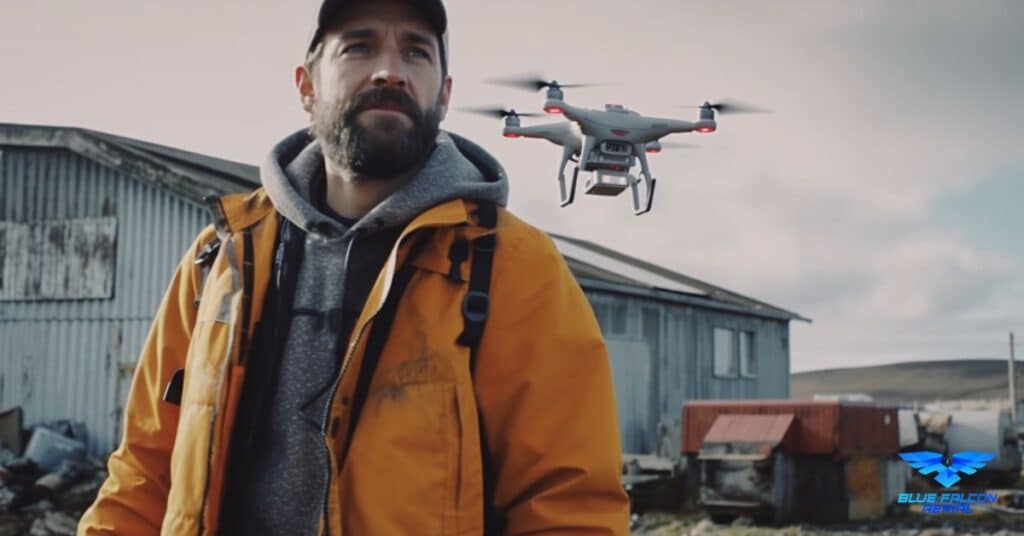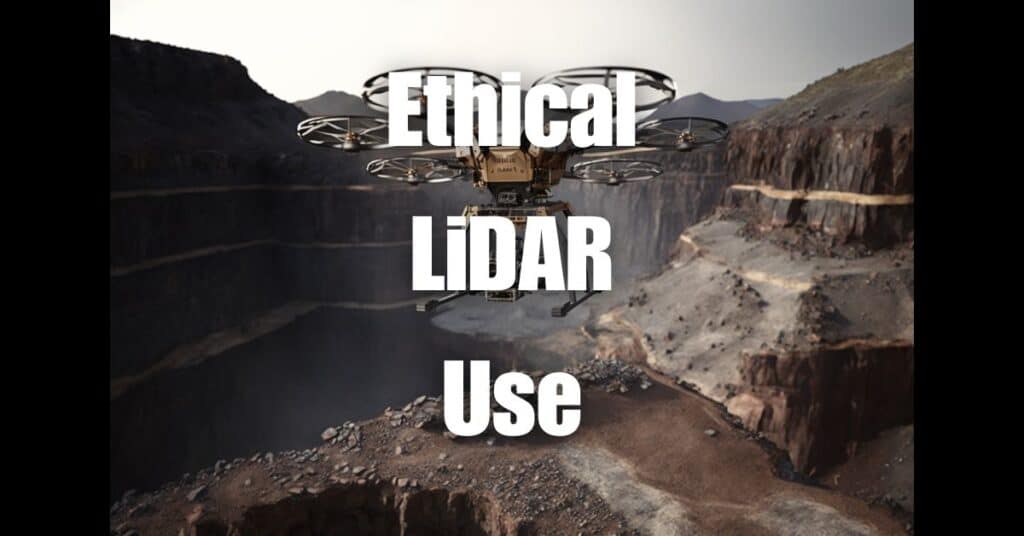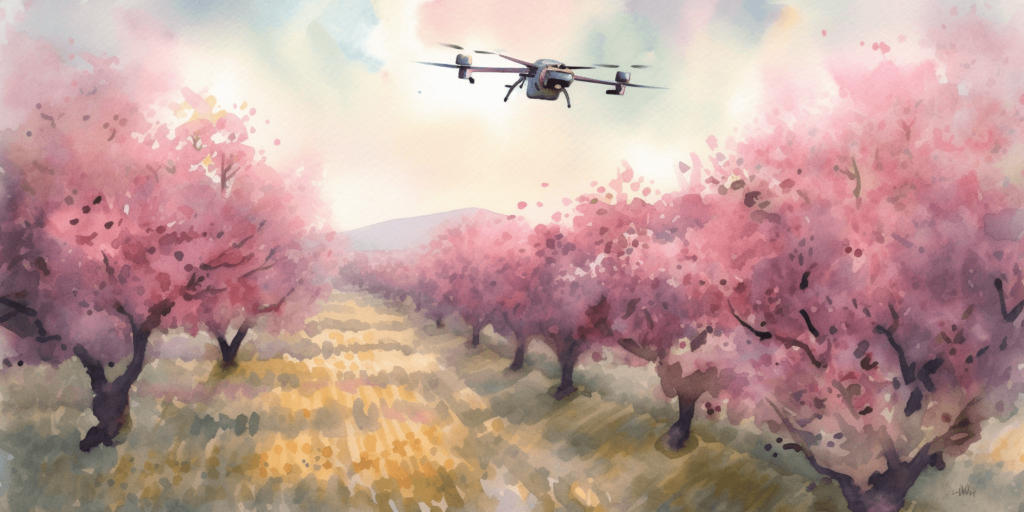In an era where security and safety are paramount, drone technology is revolutionizing the landscape of surveillance and security applications. With their aerial prowess, advanced functionalities, and real-time monitoring capabilities, drones are now a compelling solution to safeguarding our homes, businesses, and nations. This article will dive deep into the various drone security and surveillance applications, providing a comprehensive view of the technologies integrated within drones to enhance security across different industries.
The Emergence of Drone Security and Surveillance
In the last decade, the world has witnessed a major shift in the realm of security and surveillance. Traditionally, these areas relied heavily on human resources and ground-based technologies. However, the emergence of drone technology has entirely changed the game, setting a new bar for what’s possible.
Historical Background
The use of drones, or unmanned aerial vehicles (UAVs), is not a new concept. Initially, they were primarily utilized by the military for reconnaissance missions and aerial attacks where manned flight was considered risky. Over time, advancements in technology and a decrease in cost led to drones being widely adopted in various civilian sectors, including security and surveillance.
Current State and Advancements
In the present day, drones have become a staple in the security and surveillance sector. A host of technologies are now integrated with drones to improve their effectiveness:
- High-resolution cameras allow for clear, detailed imagery, facilitating better recognition and analysis.
- Infrared and thermal sensors enable nighttime surveillance, picking up heat signatures that are invisible to the naked eye.
- LIDAR and radar systems assist in mapping and scanning areas with high accuracy.
- Real-time data transmission ensures swift relay of surveillance footage to operators or security systems.
These advancements have not only expanded the functionality of drones but also made them more accessible and affordable for everyday use.
Understanding Drone Security and Surveillance Applications
The world of drone security and surveillance is vast, encompassing numerous applications, from patrolling borders to monitoring large events.
Drone Technology
At the heart of drone security and surveillance is the drone itself, a complex piece of machinery brimming with advanced tech. Key components include a powerful propulsion system for flight, high-precision controllers for maneuverability, and an array of sensors to capture data. Furthermore, many modern drones are equipped with sophisticated AI systems that enable autonomous operation.
| Component | Function |
|---|---|
| Propulsion System | Enables flight, typically includes motor and propellers. |
| Controllers | Allow precise maneuvering of the drone. |
| Sensors | Capture a variety of data, from visual footage to thermal signatures. |
| AI System | Facilitates autonomous operation, object detection, and tracking. |
Different Types of Drones for Security and Surveillance
The type of drone deployed for security and surveillance can vary depending on the application and requirements. Here are some common types:
Fixed-wing drones: These drones are similar in design to traditional airplanes, capable of long flight durations but require a runway or launcher for take-off.
Multirotor drones: Most commonly used for surveillance, these drones can hover in place, move in any direction, and take off and land vertically.
Hybrid drones: Combining the best of both worlds, these drones can hover and move directionally like multirotors but also have the long flight durations typical of fixed-wing drones.
Each of these drone types, when equipped with the right sensors and systems, can serve as a powerful tool for security and surveillance.
Features and Functionalities
Drone security and surveillance systems offer a wealth of features and functionalities. They can provide real-time monitoring solutions, autonomously patrol predefined paths, and alert operators to anomalies. Advanced systems can even integrate with other security systems to create a comprehensive security solution. Whether it’s protecting residential neighborhoods or securing critical infrastructure, drones are quickly becoming the go-to choice for modern security needs.
Drone Security Systems and Monitoring Solutions
The vast world of drone security and surveillance brings with it an array of systems and solutions to ensure the highest level of protection. These systems enhance real-time monitoring, secure perimeters, and provide advanced tracking and identification.
Real-Time Drone Monitoring Solutions
Drone monitoring solutions offer a critical advantage: the ability to provide real-time, up-to-the-minute data. This includes live video feeds, immediate detection and alerts for potential security breaches, and swift response initiation. Thanks to high-speed data transmission technologies, the information drones capture is relayed in real-time to operators or automated security systems for instant assessment and action.
Drone-Assisted Security Patrols
Drone-assisted security patrols significantly enhance security effectiveness. They allow for faster, more frequent patrols over large areas that would otherwise be time-consuming or even impossible to cover on foot. Drones can follow predetermined routes, autonomously patrolling areas and sending back live footage for monitoring. This autonomous surveillance technology is especially effective for large properties, complex infrastructure, and areas that pose safety risks to human security personnel.
Drone-Based Perimeter Security
Drones are incredibly effective for perimeter security. Equipped with advanced sensors and detection systems, they can monitor the boundaries of a property for any unusual activity or intrusion attempts. Particularly for industries such as warehousing and distribution, where large, open spaces are common, drone-based perimeter security provides a level of surveillance that is not feasible with traditional methods.
Drone Tracking and Identification Systems
In addition to basic surveillance and security, drones can also be equipped with sophisticated tracking and identification systems. These can include facial recognition, license plate reading, and even thermal detection systems to identify individuals or objects of interest. Such features make drones an invaluable asset for law enforcement and other security-intensive industries.
Drone Security and Surveillance in Various Industries
Drones have seen extensive adoption across a broad range of industries, thanks to their flexibility and the robust security and surveillance capabilities they offer.
Real Estate
In the real estate sector, drones provide a high level of security for properties, especially large residential complexes and commercial properties. From real-time monitoring of premises to rapid response in case of security breaches, drones are becoming an integral part of modern property security solutions.
Agriculture
For farmers and agricultural businesses, drones offer an efficient way to monitor large tracts of land. They can swiftly identify any potential security threats, monitor livestock, and even help deter wildlife from damaging crops. Drones in agriculture not only boost security but also contribute to overall farm management and productivity.
Events and Public Safety
Drones are increasingly being deployed for security and surveillance at public events such as concerts, sports events, and festivals. They provide a bird’s eye view of the situation, allowing security teams to monitor large crowds, identify potential issues, and respond swiftly to any emergencies.
Industrial Applications
Industrial premises, warehouses, and distribution centers often encompass large areas with numerous points of interest. Drone security systems ensure thorough monitoring and safeguard these locations against theft, vandalism, and other security threats. With the ability to operate day and night, drones provide round-the-clock security.
Critical Infrastructure Protection
Critical infrastructures such as power plants, telecommunication sites, and utility services often occupy large spaces and are usually located in remote areas. Protecting these sites is of utmost importance. Drones equipped with advanced surveillance systems provide an efficient solution, offering regular patrols, real-time monitoring, and instant alerts in case of any anomalies.
Border Security
Drones are revolutionizing border security by providing persistent surveillance along border lines. They can cover vast distances, operate under different weather conditions, and send real-time data, making them an invaluable tool for border patrol agencies. In addition, drones equipped with thermal imaging and night vision can track movements even under low-light
The Legal and Ethical Considerations
As drones become increasingly prevalent in security and surveillance, it’s essential to understand the legal and ethical considerations that surround their use. This includes understanding current laws and regulations, privacy laws relating to drone surveillance, and the broader privacy concerns associated with drone usage.
Current Laws and Regulations
Drone usage for security and surveillance applications is subject to various laws and regulations. While these differ between countries, they generally cover aspects such as where and when drones can be flown, what they can record or capture, and who can operate them.
For instance, in many countries, drones must stay within the operator’s line of sight, can’t be flown near airports or above certain altitudes, and may require permits for commercial use. Additionally, many countries require drone operators to undergo specific training or certification.
Staying informed about the latest regulations and adhering to them is vital for all organizations that use drones for security and surveillance.
Privacy Laws and Drone Surveillance
With the ability to capture high-resolution images and videos from the sky, drones raise significant privacy concerns. Several jurisdictions have specific privacy laws relating to drone surveillance. For instance, they might limit the types of footage that drones can capture, where they can capture it, and how that footage can be used.
Again, it’s crucial for drone users to understand these privacy laws, which can be complex and vary greatly between regions. Failure to comply could lead to legal action and substantial fines.
Privacy Concerns
Beyond the legal implications, drone surveillance also raises broader ethical and privacy concerns. The idea of drones capturing images and videos from above — potentially without people’s knowledge or consent — can be disconcerting.
These concerns necessitate a balanced approach to drone surveillance. Organizations must not only comply with the law, but also consider the privacy expectations of individuals. Transparency about when, where, and why drones are being used can go a long way in mitigating these concerns.
Emergency Response and Disaster Management with Drones
In emergency situations, every second counts. Drones, with their agility and speed, have proven to be invaluable tools for first responders and disaster management personnel.
Rapid Assessment
In the aftermath of a natural disaster, drones can be quickly deployed to assess the extent of damage, locate stranded victims, and determine the best routes for relief teams. Unlike ground-based teams, drones aren’t hindered by damaged roads or infrastructure. They can fly over any obstacles and provide a bird’s-eye view of the situation.
Search and Rescue
Drones equipped with thermal imaging can detect the heat signatures of people, making them highly effective in search and rescue missions. Whether it’s finding a missing hiker in the wilderness or locating survivors in the aftermath of a disaster, drones can search large areas quickly and efficiently.
Supply Delivery
In certain situations, drones can deliver supplies to people trapped or isolated by disasters. This could include food, water, medical supplies, or other essential items. Drones can access areas that are too dangerous or difficult for humans to reach, providing a lifeline in critical situations.
Communication
In a disaster scenario, communication networks can often be disrupted. Drones can serve as temporary communication relay points, enabling first responders to communicate with each other and with victims.
The use of drones in emergency response and disaster management not only improves efficiency and outcomes, but also reduces the risks faced by first responders. They are a powerful example of the benefits of drone security and surveillance applications.
Crowd Monitoring and Event Security with Drones
In recent years, drones have emerged as an innovative solution for crowd monitoring and event security. They offer unique advantages over traditional surveillance methods, making them a popular choice for event organizers, law enforcement, and public safety officials.
Overview of Crowd Monitoring with Drones
Crowd monitoring involves keeping an eye on large gatherings of people to ensure safety and maintain order. With their bird’s eye view, drones provide an excellent platform for this task. They can quickly scan a large area, identify potential issues, and relay this information to security personnel on the ground in real time.
Drone-based crowd monitoring is particularly useful during public events like concerts, sports events, protests, or any gathering where large numbers of people are present. It can help identify potential problems such as overcrowding, disorderly behavior, or emergencies, and allow for rapid response.
Drones for Event Security
Drones are also being increasingly used for security at events. They can patrol an area, monitor perimeters, and keep an eye on entrances and exits. With their ability to quickly reach areas that might be difficult to access on foot, drones can also play a crucial role in emergency response during events.
Drone Capabilities in Crowd Monitoring and Event Security
Drones used for crowd monitoring and event security are typically equipped with high-resolution cameras that can capture both video and still images. Some drones also feature thermal imaging to detect people or objects in low light conditions, or even through smoke or fog.
Moreover, with advancements in AI and machine learning, drones can now be programmed to identify certain behaviors or patterns in a crowd, such as disturbances or signs of distress, and alert security personnel.
Despite these benefits, it’s important to remember that the use of drones for crowd monitoring and event security must be done responsibly and in accordance with privacy laws and regulations.
Case Studies of Drone Security and Surveillance
In this section, we’ll explore several real-world instances where drone security and surveillance have been implemented successfully. These case studies highlight the versatility and efficiency of drones in protecting properties and ensuring safety.
Case Study 1: Residential Security in an upscale neighborhood
In an upscale neighborhood in California, residents have started using drone security systems for additional protection. The system, equipped with advanced cameras and sensors, conducts daily patrols around the property. The drone’s AI is trained to detect anomalies such as unrecognized vehicles or individuals, and alerts the homeowner and the local security firm. This proactive approach has significantly reduced break-ins and increased residents’ sense of security.
Case Study 2: Industrial Security at a Large Factory
A large factory in Michigan has implemented a drone surveillance system to ensure the safety and security of its vast premises. The drones are programmed to conduct regular surveillance rounds and monitor for any signs of intrusion or suspicious activity. They are also equipped with thermal imaging to detect any potential fire risks, helping to prevent industrial accidents before they occur. The factory reports improved safety measures and operational efficiency since the implementation of the drone security system.
Case Study 3: Agricultural Security on a Farm
On a large farm in Iowa, drones are used not only for crop monitoring but also for property surveillance. These drones are equipped with cameras that provide real-time video feeds to the farm owners, allowing them to monitor their property from anywhere. The drones also use AI-powered recognition systems to detect any human or vehicle movement in restricted areas, effectively preventing theft and vandalism. The implementation of drone surveillance has resulted in higher crop yields and improved security.
Case Study 4: Event Security at a Music Festival
At a large music festival in Austin, Texas, drones were used to provide overhead surveillance and crowd monitoring. Equipped with high-resolution cameras and AI-powered crowd analysis algorithms, the drones helped the security team identify potential crowd-related issues and respond promptly. The use of drones significantly improved the security team’s situational awareness, leading to a safer and more organized event.
Through these case studies, it becomes clear that drone security and surveillance can be applied effectively across various settings – from residential properties to large-scale industrial and event spaces. Their ability to provide real-time surveillance, detect anomalies, and respond to potential threats makes them a valuable tool in modern security infrastructure.
Drone Operator Training and Certifications
As with any technology, drones are only as good as the people operating them. To ensure safe and effective use of drones for security and surveillance, operators must be properly trained and certified.
Importance of Training
Operating a drone involves much more than just controlling its movements. Operators need to understand the capabilities and limitations of their drone, how to react in case of an emergency, and how to interpret the data the drone collects. They also need to be aware of relevant laws and regulations, as well as privacy and ethical considerations.
Types of Training
Drone operator training can take many forms, depending on the specific use of the drone. For security and surveillance applications, training typically includes:
- Basic drone operation, including takeoff, flight, and landing
- Emergency procedures
- Camera operation and data interpretation
- Autonomous flight and patrol programming
- Understanding of laws and regulations
- Privacy and ethical considerations
Certifications
In many jurisdictions, commercial drone operators are required to hold a certification or license. The process to obtain these can vary, but usually involves a knowledge test and a practical flight exam. In some places, operators may also need to complete a certain number of training hours or undergo a background check.
Even if not required by law, holding a recognized certification can demonstrate a drone operator’s competence and professionalism. It can also provide reassurance to clients or employers that the operator is capable of conducting drone security and surveillance operations safely and effectively.
With the growing use of drones in security and surveillance, the demand for skilled and certified drone operators is expected to rise. For those interested in this field, investing in proper training and certification can open up exciting opportunities.
Choosing the Right Drone for Security and Surveillance
Selecting the right drone for your security and surveillance needs can be a challenging task given the wide array of options available in the market. It requires a deep understanding of your specific requirements, coupled with knowledge of the features and functionalities of different drones.
Factors to Consider When Choosing a Drone
Purpose: The first step in choosing a drone is to clearly define its intended use. Whether you need a drone for monitoring a construction site, providing event security, or performing search and rescue missions will significantly impact the type of drone you should choose.
Camera Quality: The quality of the camera is crucial for security and surveillance drones. It should provide high-resolution images and be capable of capturing video footage.
Flight Time and Range: These factors determine how long and how far a drone can fly on a single charge. Depending on the size and layout of the area you need to surveil, you may need a drone with longer flight time and a greater range.
Advanced Features: Look for advanced features such as thermal imaging, which can be especially useful for nighttime surveillance. Autonomous flight capabilities, obstacle avoidance systems, and real-time data transmission can also be beneficial for surveillance applications.
Regulatory Compliance: Ensure the drone you choose meets all regulatory requirements in your region, including weight limits, altitude restrictions, and certification requirements for commercial use.
Best Drones for Security and Surveillance on a Budget
If you’re working with a tight budget, don’t worry. You can still find drones with excellent security and surveillance capabilities. Here are a couple of options:
DJI Mavic Air 2: This drone offers a good balance of price and performance. It has a high-quality camera, impressive flight time, and comes with advanced features such as obstacle avoidance.
Parrot Anafi: This drone is light, portable, and equipped with a 4K HDR camera. It offers a decent flight time and has a zoom feature that can be useful for surveillance.
Thermal Imaging Drones for Nighttime Surveillance
For nighttime surveillance, drones equipped with thermal imaging cameras are an excellent choice. They can detect heat signatures, making it possible to monitor movements even in total darkness. One of the top choices in this category is the DJI Matrice 300 RTK. It’s a professional-grade drone with a high-performance thermal imaging camera, among other advanced features.
While these recommendations can serve as a starting point, it’s essential to conduct thorough research and consider seeking expert advice before making a purchase.
Future Trends in Drone Security and Surveillance
As technology continues to advance, so too does the potential of drone security and surveillance. Here are a few trends to watch out for in the near future:
AI and Machine Learning: AI and machine learning technologies are expected to play an increasingly significant role in drone security and surveillance. They could enable drones to autonomously identify suspicious activities or anomalies and even predict potential security threats.
Increased Autonomy: Drones are likely to become more autonomous, reducing the need for human operators. This could include automatic patrolling routes, self-docking and charging, and advanced obstacle avoidance.
Integration with Other Security Systems: Drones will likely be more seamlessly integrated with other security systems. For instance, they could be automatically dispatched when a security camera detects a breach.
Miniaturization: As drone technology advances, drones are expected to become smaller and lighter, making them less noticeable and potentially increasing their effectiveness in surveillance applications.
Regulatory Evolution: As the use of drones becomes more widespread, regulations are expected to evolve to better accommodate and control their use. This could include the creation of airspace corridors for drones, requirements for remote identification, and more.
The future of drone security and surveillance looks bright, with numerous technological advancements on the horizon. As these technologies continue to mature and be adopted, it’s likely that we’ll see drones playing an even greater role in security and surveillance.




